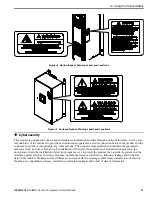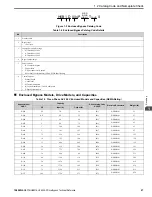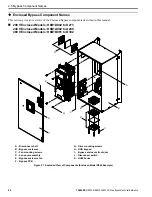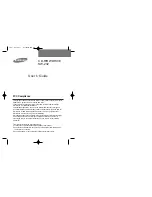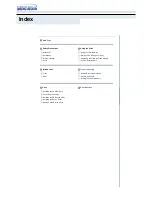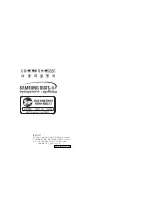
1.2 Catalog Code and Nameplate Check
YASKAWA
SIEPYAIH6B01A HV600 AC Drive Bypass Technical Reference
29
◆
Bypass Enclosures
All bypass units are for installation in non-hazardous locations. All bypass units are IP20/UL Type 1 Enclosures for
indoor use to provide a degree of protection against incidental contact with enclosed electrical equipment and falling
dust or dirt.
◆
Features and Advantages of V/f Control Method
gives information about the features of the V/f control method.
Table 1.8 Features and Advantages of V/f Control Method
Control Method Selection
V/f Control
Notes
Basic Control
V/f
-
Main Applications
General-purpose variable speed control to connect more than
one motor to one bypass.
-
Maximum Output Frequency
400 Hz
-
Speed Control Range
1:40
This is the range of variable control.
When you connect and operate motors in this mode, think about the increase
in motor temperature.
Starting Torque
140%/3 Hz
This is the motor torque that the bypass can supply at low speed during start-
up and the related output frequency (rotation speed).
You must think about bypass capacity and motor capacity when a large
quantity of torque is necessary at low speed.
Auto-Tuning
Rotational and Line-to-Line Resistance (usually not
necessary)
Automatically tunes electrical motor parameters.
Torque Limits
No
Controls maximum motor torque to prevent damage to machines and loads.
Speed Search
Yes
Immediately estimates (or detects) motor speed and direction when coasting
to a stop to quickly start-up the bypass without stopping the motor.
Automatic Energy-saving Control
Yes
Automatically adjusts the voltage applied to motors to maximize motor
efficiency for all load sizes.
High Slip Braking (HSB)
Yes
Increases motor loss to let the motor decelerate faster than usual without a
braking resistor. Motor characteristics have an effect on this function.
Overexcitation Deceleration
Yes
Sets the V/f higher than the setting value during deceleration to increase
motor loss and decrease deceleration time.
Overvoltage Suppression Function
Yes
Adjusts speed during regeneration to prevent overvoltage.
*1
Note these points when you use this function:
•
When you can decouple the motor and machine for a test run, use Rotational Auto-Tuning. You must make adjustments to the control
in the range where there is no vibration in the machine after Rotational Auto-Tuning.
•
Motor loss increases during overexcitation braking and high-slip braking. Use a maximum braking frequency of 5% ED and a
maximum braking time of 90 seconds. After you start high-slip braking, you cannot restart the motor until it stops. Use overexcitation
braking to decelerate over a shorter time at a pre-determined speed.
Содержание H6B1A002
Страница 2: ...This Page Intentionally Blank 2 YASKAWA SIEPYAIH6B01A HV600 AC Drive Bypass Technical Reference...
Страница 12: ...12 YASKAWA SIEPYAIH6B01A HV600 AC Drive Bypass Technical Reference...
Страница 30: ...1 2 Catalog Code and Nameplate Check 30 YASKAWA SIEPYAIH6B01A HV600 AC Drive Bypass Technical Reference...
Страница 68: ...2 9 Knock Out Hole Dimensions 68 YASKAWA SIEPYAIH6B01A HV600 AC Drive Bypass Technical Reference...
Страница 74: ...Page Intentionally Blank...
Страница 76: ...Page Intentionally Blank...
Страница 454: ...5 14 Z Bypass Parameters 454 YASKAWA SIEPYAIH6B01A HV600 AC Drive Bypass Technical Reference...
Страница 590: ...8 6 Storage Guidelines 590 YASKAWA SIEPYAIH6B01A HV600 AC Drive Bypass Technical Reference...
Страница 694: ...9 19 Defaults by Bypass and Drive Model 694 YASKAWA SIEPYAIH6B01A HV600 AC Drive Bypass Technical Reference...
Страница 768: ...10 6 MEMOBUS Modbus Communications 768 YASKAWA SIEPYAIH6B01A HV600 AC Drive Bypass Technical Reference...
Страница 780: ...11 3 European Standards 780 YASKAWA SIEPYAIH6B01A HV600 AC Drive Bypass Technical Reference...





